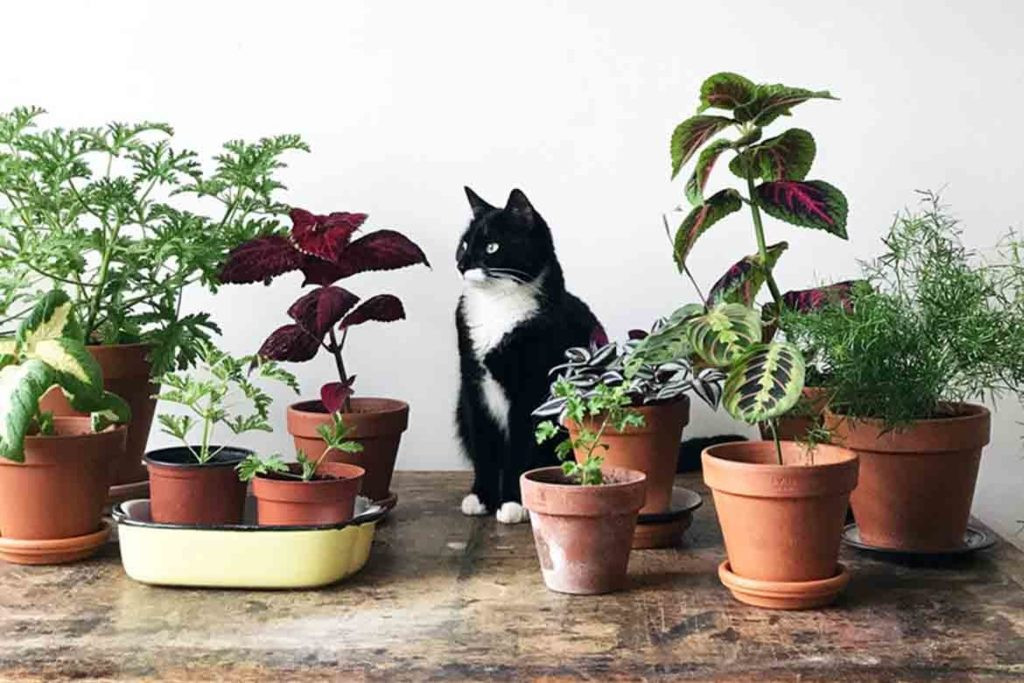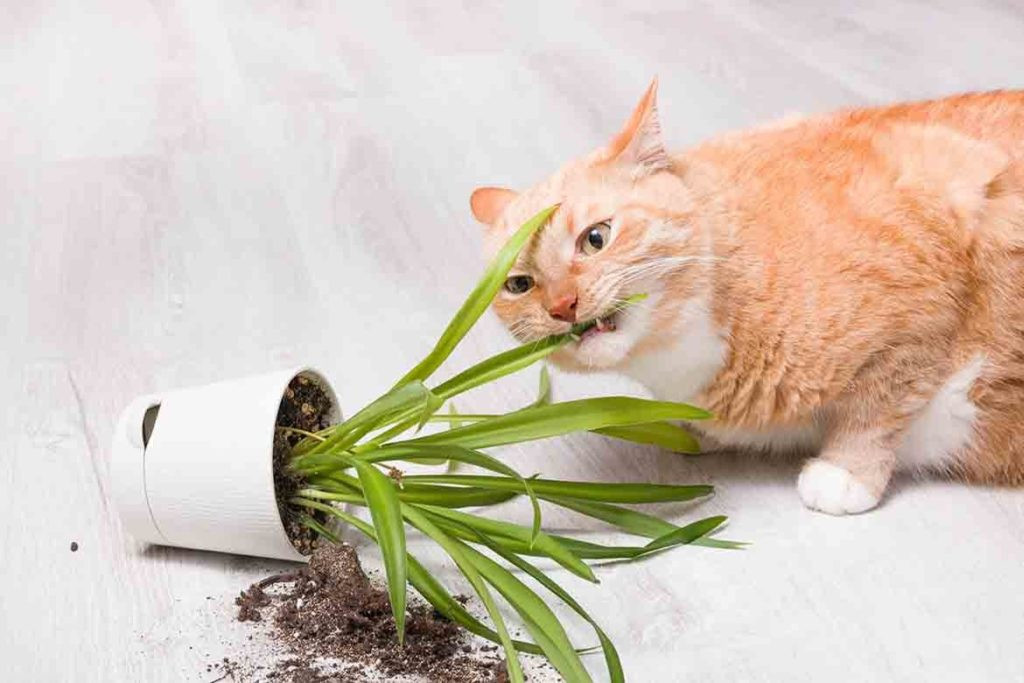Bringing greenery into your home can brighten your living space and even improve air quality. For cat lovers, however, the introduction of any new houseplant comes with a crucial question: is it safe for my feline friend? When it comes to spider plants, you might have heard conflicting information. Are spider plants toxic to cats? Let’s explore the facts and separate common misconceptions from reality to ensure your cat’s safety and your peace of mind.
Spider plants (Chlorophytum comosum) are popular houseplants, loved for their air-purifying qualities and ease of care. They are characterized by their long, slender leaves, often striped with white, and the little “spiderettes” or baby plants that dangle down, giving them their common name. But despite their visual appeal and popularity, the question of their toxicity to cats often arises.
 cat safe plants pet friendly succulents ideas ferns non toxic
cat safe plants pet friendly succulents ideas ferns non toxic
The Truth About Spider Plants and Cat Safety
Good news for cat owners! Spider plants are generally considered non-toxic to cats according to numerous reputable sources, including the ASPCA (American Society for the Prevention of Cruelty to Animals). This means that if your cat nibbles on a spider plant, you can breathe a sigh of relief. They are unlikely to suffer severe poisoning or life-threatening symptoms.
However, it’s important to understand the nuance. While spider plants are not classified as toxic, they are not entirely without potential effects on cats. The key is to differentiate between “toxic” in the severe sense and potential mild irritations.
Why the Confusion? Potential Mild Irritation
The confusion around spider plant toxicity might stem from a couple of reasons:
- Mild Saponins: Spider plants contain saponins, which are compounds found in many plants. Saponins can cause mild gastrointestinal upset in cats if ingested in large quantities. This is not unique to spider plants; many non-toxic plants can cause similar reactions if a cat eats too much.
- Attractiveness to Cats: Ironically, one reason cats might interact with spider plants is their slightly enticing nature. Some cats are attracted to spider plants, possibly due to their grass-like leaves or a mild, almost catnip-like effect. This increased interaction might lead owners to worry about toxicity, even when the plant isn’t severely poisonous.
- Misinformation: Like any topic online, misinformation can spread. Outdated or inaccurate sources might label spider plants as toxic, causing unnecessary concern.
Potential Symptoms if Your Cat Eats a Spider Plant
Even though spider plants are not toxic, if your cat indulges in a significant amount, they might experience mild symptoms such as:
- Vomiting: This is the most common reaction if a cat eats too much plant material, including spider plants.
- Diarrhea: Similar to vomiting, diarrhea can occur as the cat’s digestive system reacts to the plant matter.
- Nausea or Lack of Appetite: Your cat might seem slightly unwell or refuse food temporarily.
These symptoms are usually mild and self-limiting, resolving on their own within a short period without veterinary intervention. However, if your cat exhibits severe symptoms like excessive vomiting, diarrhea, lethargy, or any other concerning signs after eating a spider plant, it’s always best to consult with your veterinarian to rule out any other underlying issues.
 cat safe plants pet friendly succulents ideas ferns non toxic
cat safe plants pet friendly succulents ideas ferns non toxic
Spider Plants as Mild “Catnip” Alternatives?
Some cat owners have observed that their cats seem to enjoy spider plants in a way that’s reminiscent of catnip. While spider plants don’t contain nepetalactone, the active compound in catnip, they might have a mild psychoactive effect on some cats. This could be due to other compounds in the plant.
If your cat is particularly drawn to your spider plant, it’s not necessarily a cause for alarm in terms of toxicity. However, it might lead to more nibbling and potential mild stomach upset, or damage to your plant!
Benefits of Spider Plants (and How to Keep Them Safe from Cats)
Despite the minor concerns, spider plants offer several benefits, even for cat owners:
- Air Purification: Spider plants are excellent at removing toxins like formaldehyde and xylene from indoor air, contributing to a healthier home environment for both you and your cat.
- Easy to Grow: They are low-maintenance and adaptable, making them great for beginners or busy plant enthusiasts.
- Non-Toxic Alternative: For cat owners who want to enjoy greenery without the worry of severe poisoning, spider plants are a safe and attractive option compared to truly toxic plants like lilies or snake plants.
Tips for Harmony Between Cats and Spider Plants:
- Placement: If your cat is a plant chewer, place your spider plant in a location that is less accessible, such as a high shelf or hanging planter.
- Provide Alternatives: Offer your cat safe alternatives for chewing, such as cat grass or catnip toys. This can redirect their attention away from your houseplants.
- Bitter Apple Spray: A pet-safe bitter apple spray can be applied to the leaves of the spider plant to deter your cat from nibbling.
- Monitor and Observe: Keep an eye on your cat’s interaction with the spider plant. If they are excessively interested or showing any signs of stomach upset, adjust the plant’s location or take other preventative measures.
Plants That ARE Toxic to Cats: What to Avoid
While spider plants are generally safe, it’s crucial to be aware of plants that are genuinely toxic to cats. Some of the most dangerous plants include:
- Lilies: Extremely toxic and potentially fatal, even in small amounts. All parts of the lily plant are poisonous to cats.
- Tulips and Daffodils: Bulbs are the most toxic part, but all parts can cause illness.
- Snake Plants: Can cause vomiting, diarrhea, and other symptoms if ingested.
- Azaleas and Rhododendrons: Highly toxic and can cause serious issues.
- Oleander: Extremely poisonous.
This is not an exhaustive list. Always research any plant before bringing it into your home if you have cats. Resources like the ASPCA’s toxic plant database are invaluable for identifying potentially harmful plants.
Conclusion: Enjoy Spider Plants with Cat-Friendly Caution
To definitively answer the question: No, spider plants are not considered toxic to cats in the dangerous, life-threatening sense. They are generally safe, but can cause mild gastrointestinal upset in some cats if consumed in large quantities.
As a responsible cat owner, it’s always wise to exercise caution. While you don’t need to banish spider plants from your home, being mindful of your cat’s behavior around them and taking simple preventative steps can ensure both your cat’s well-being and the longevity of your lovely spider plant. Enjoy the beauty and air-purifying benefits of spider plants, knowing they are one of the safer choices for homes with curious feline companions.
Remember, when in doubt about any plant’s safety, err on the side of caution and consult reliable resources or your veterinarian. Creating a pet-safe and plant-filled home is achievable with a little knowledge and planning.
